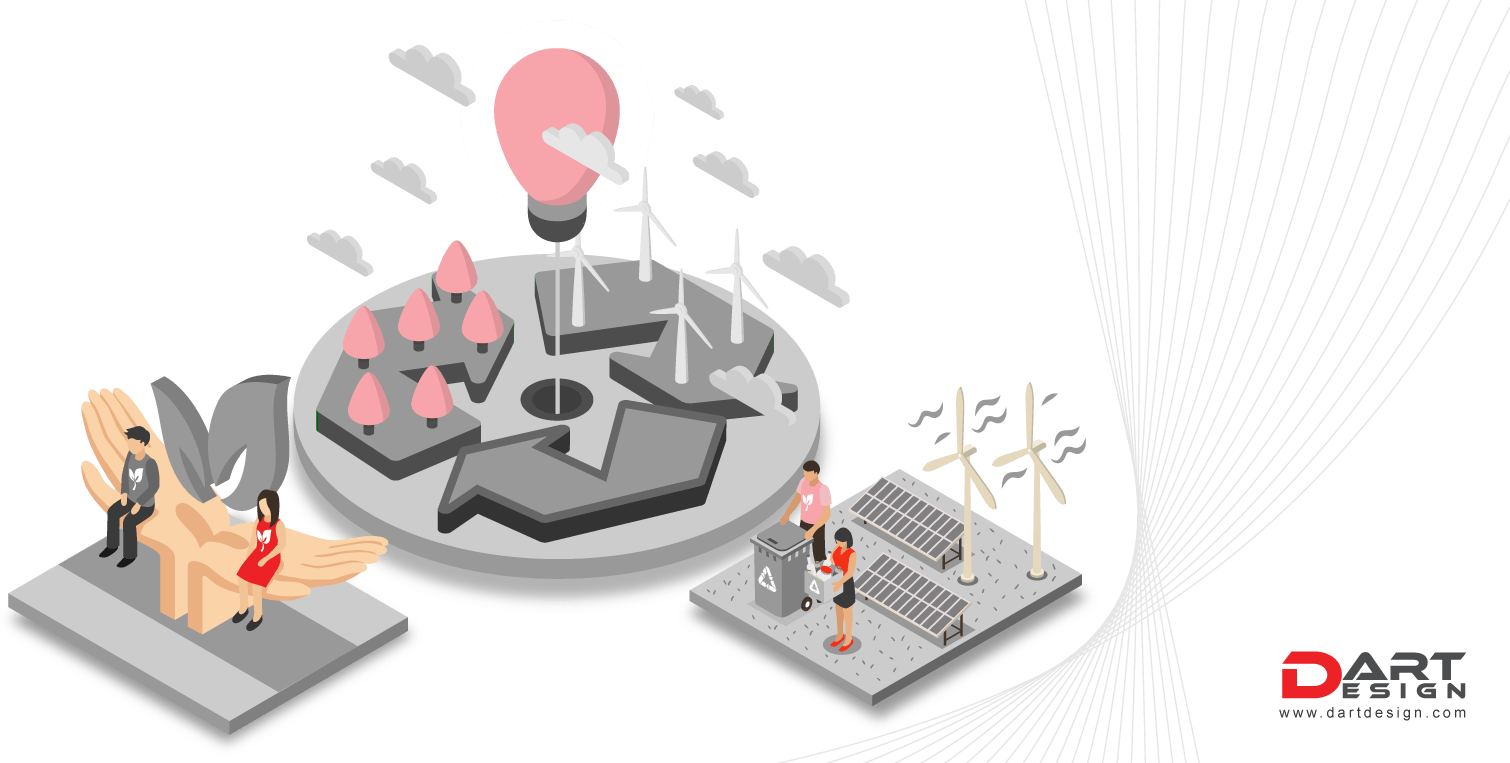
Our design functions as the core of the Circular economy. It aims for regeneration, not reduction
Nature and life have a cyclical pattern. What we give comes back eventually, and that’s precisely why humankind is sitting on the periphery of destruction, living at a consumption rate beyond the planet’s limits. The give-and-take cycle has ceased to exist. We are stuck inside a linear pattern as the ecological balance slowly shifts from the middle.
This prompts us, an innovative retail branding firm, to create sustainable retail store design that has micro- and macro-level efficiency for businesses through initiatives. We are pushing brands to embed sustainability behaviors in people's minds through micro-courses of action and yoking a brand's disposition into an environment that draws people to the brand and sways their emotions.
Through the macro-course of action, we assist brands in creating enormous systemic change that impacts everything-from production to construction and packaging inside an organization and promptly influences people. Hence, creating a complete cycle of sustainability and eco friendly store design is part of it.
We believe that the traditional image of a brick-and-mortar store no longer defines brands. Instead, they are defined by accelerating the process of regenerating the entire economic and social system. For resilience and viability, in the long run, regenerative capitalism is essential. So, we have formulated Micro & Macro level initiatives for brands to be holistically responsive to their requirements.
Designing an initiative for a carbon-less Future
We took the plunge to synthesize two fundamentals of the built-environment industry --designing an environment that bolsters biodiversity by reimagining a carbon-less future.
As an experienced designing agency inclined towards garnering a better business by making the planet & the community better, our interior environment design principles commit to balancing the scales between architectural spaces and the natural environment through a coherent carbon abatement strategy.
Our concept is to design a space where people can interact with brands and manifest their best retail experience together through cultural resonance. We do this while creating an ecosystem that allows nature and humans to coexist in harmony.
To show our apparent effort toward a cleaner & greener design initiative, we elaborate on our working principle in different degrees:
Bringing Low Carbon Design to the Center
Our innovation & inclusiveness comes from witnessing the monumental challenge of climate change, as the built-environment industry generates 40% of the total carbon emissions alone. Our team consists of designers and strategic thinkers who collaborate and consult with experts who understand the people segment, demanding the decarbonization of architectures with materials that refocus the focus from carbon neutrality to regeneration.
Erecting an environment that's sensory regulated
Before designers, we are humans and have witnessed people's ability to cope and interact with outside stimuli rapidly shift after the onslaught of a two-year pandemic. Hence, we centered the core ideation of sustainable environemnt design for a brand around the concept of sensory regulation - meant to ease people's multi-sensory experience rather than overstimulate or confuse them.
We modify the designs to include diffusing stimuli for specially-abled consumers. We aim to make them feel no less human than anyone else in the room. Every component is meant to heighten their in-store interaction, from lights to wall materials and finishes.
Devising a circular mindset with Optimized Supply Chain Management
There is a profound crisis in every industry's global supply chain domain, and a lateral shift in the vision is imperative. We take the route of atomic sustainability, where,
● Mutual waste reduction initiatives by rewarding the consumer for their effort
● Partnering with sourcing experts who follow suit in our commitment to a sustainable economy
● Take a decentralized deployment approach and choose vendors with an eco-safe production process to curtail fuel exhaustion.
● Using EV carriers for logistics to cut down on the use of conventional fuel
● Taking shorter routes to reduce material packaging and carbon footprint
Restoring balance in the environment is integral to every component of the circular economy.
Integrating eco-efficiency into aesthetic
Customers' evolving and improved tastes want eco-friendly designs without sacrificing aesthetics or the quality of their experience. We prioritize harnessing every inch of store space with particular emphasis on eco-efficiency, design responsiveness, and longevity.
For instance, wooden fixtures could effectively be replaced with metal and designed strategically to cause less use of the material in the first place. It would all be placed within the aesthetics of the space without affecting its appearance or feel.
Using waste tea residue, one of our designers developed a durable plastic-like material that can be compressed to store dry products or even pots. Their thought principle says that,
"Design should be constructive, but not deconstructive. In simpler terms, whatever we create shouldn’t be derived by taking more of the earth's resources but rather by giving them back. It should be a complete regenerative cycle”.
We are designing a brand interface that’s regenerating the planet & people’s experiences alike.
